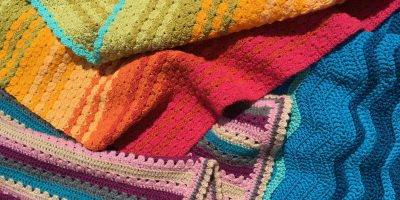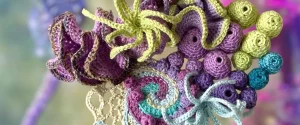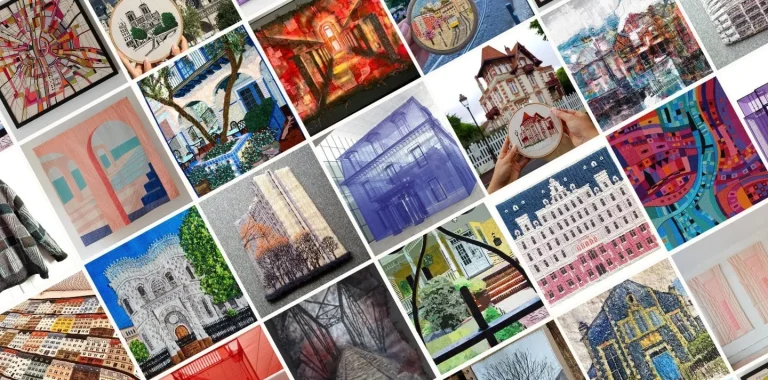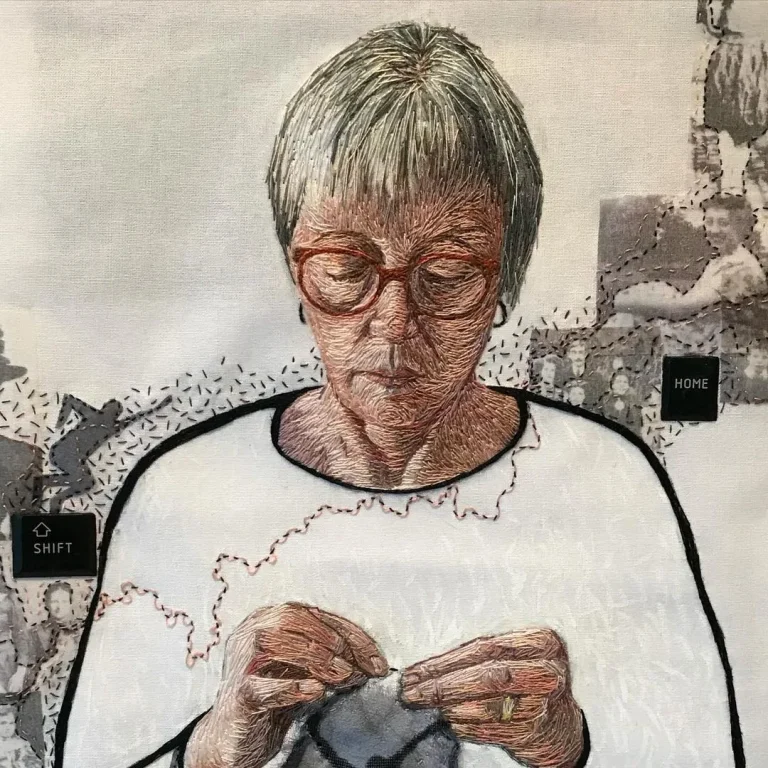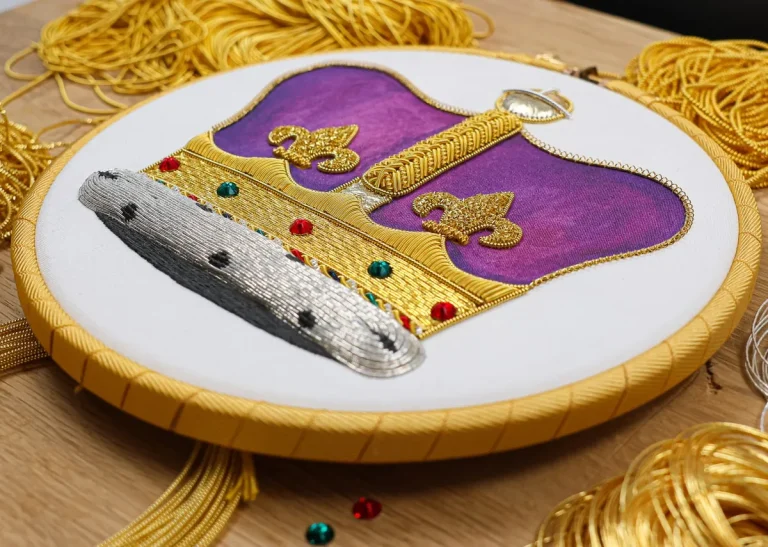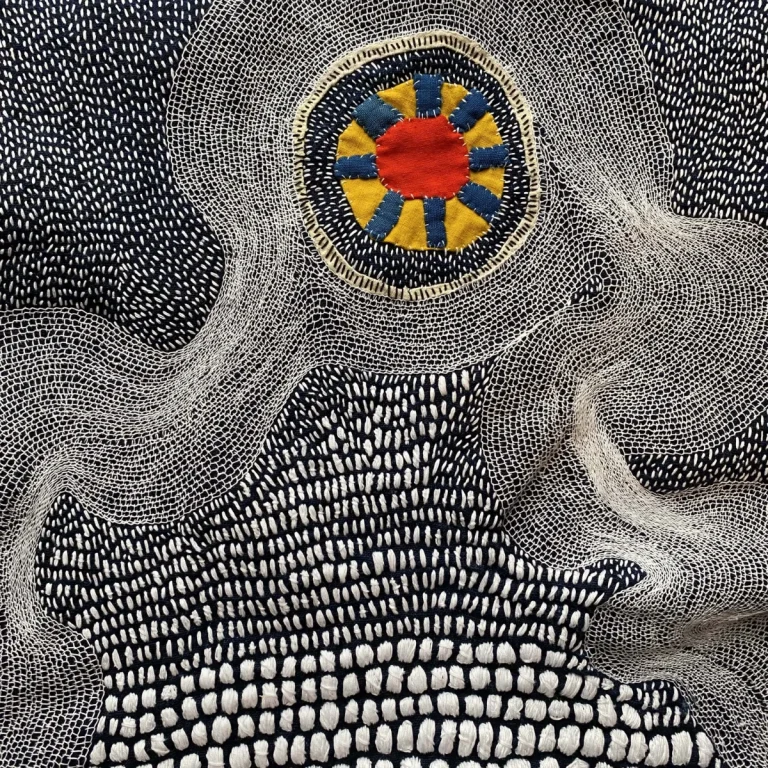Fibre Artist, Ruth Norbury is very conscious of her impact on the earth. She knows that the clothing and textiles industry is one of the largest polluters and therefore creates pieces made entirely from recycled materials.
But there is another reason.
Ruth is an embroidery artist fascinated by themes of urban decay: The sociological process by which previously functioning city, falls into disrepair. The heavily used, torn, sun-bleached materials she uses helps to portray the feeling of once loved and used, but now abandoned.
What fascinates us about Ruth’s work, is that she explores what many may refer to as ‘the darker side of life’, further inspired by her love of gothic and heavy industrial metal. And yet her medium of chose is hand embroidery. We love that Ruth Norbury perfectly demonstrates the versatility of embroidery. She’s also not afraid to break with convention!
We had the honour of talking to Ruth about her latest projects, working through the pandemic and where you can see her work. Subscribe to our newsletter for the latest news and more inspirational interviews with leading textile artists.
“A lot of my work has a feeling of loneliness and abandonment, it is often very dark in colour too. The idea of living in that kind of post-apocalyptic world is fascinating to me.”

Tell us about the piece you’re currently working on – what was your inspiration for it, what is it made from, the processes involved and what is it being made for?
I am currently working on an abandoned staircase embroidery It ‘s nearly finished, but I’m just in the pondering stage. I like to put the embroidery on my notice board for a while and see if I need to change anything.
The piece is inspired by time, it is in an abandoned building. The roof has fallen in and it’s in disrepair. But I’m drawn to the thought of who used to climb those stairs? What can I see from the window at the top? What was the house like originally and why has it become abandoned?
The work is made from upcycled materials. A charity shop is an amazing source of fabrics. I try and get my supplies second hand too, so auctions on EBay are perfect as well. I am an embroidery Womble really.
My current embroidery has pieces of fabric patched together that are cut up again, washed and stitched back together to add texture. I then stitch the outlines of the buildings on my antique Singer sewing machine. (It’s happier to deal with the thickness and different types of fabrics than any modern machine I have used). Then a trip to the garden to dye the embroidery. When it is dry, I use whatever I feel is most appropriate to capture the textures of the building. This piece has a lot of Lutradur incorporated in it but I also use hand embroidery, beads, paper and anything else I can find.
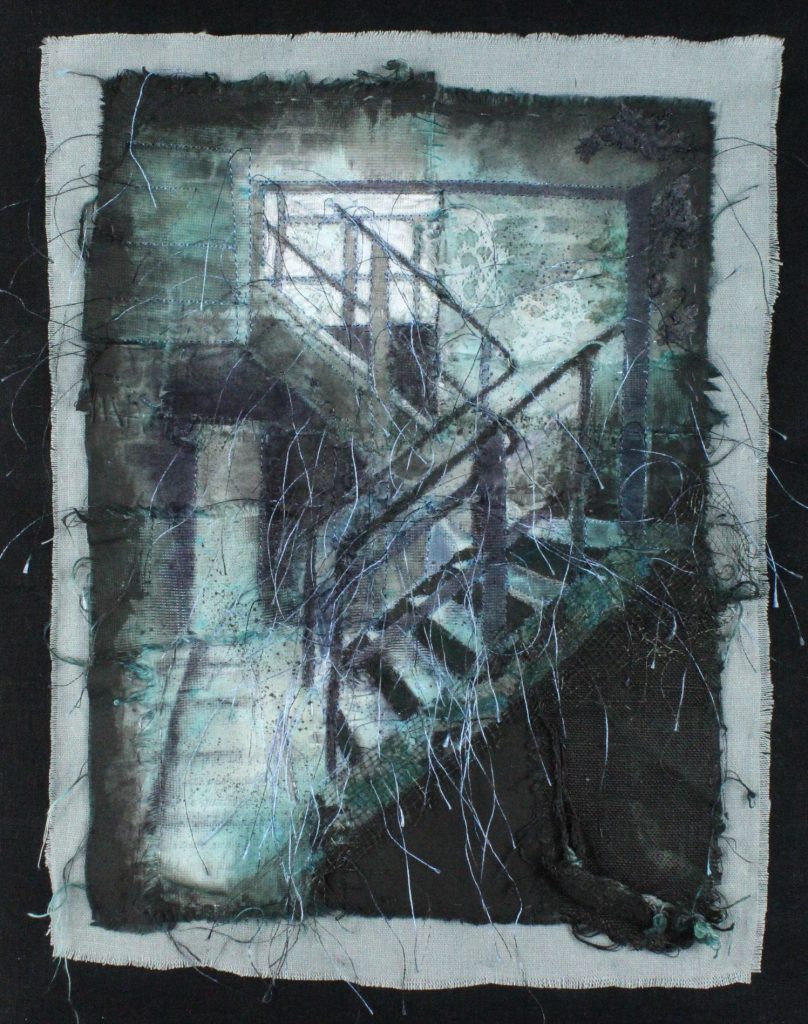
How did you first find your way into embroidery?
In primary school, we made a cross stitch snowflake (which I did badly wrong). From there, I asked for kits for Christmas and birthdays as they were expensive and I could stitch faster than my pocket money saved up. While I was in secondary school, I started filling in designs with stitch, stencils, iron-on designs, kits from magazines, whatever I could get my hands on. I would often give them to my boyfriend James (who is now my husband – see the power of embroidery!) James’ mum saw some of these pieces and asked if I had thought about becoming an artist which I thought was a ridiculous idea. However, within a year, that is what I was doing.
You say that the darker side of life draws you – how does this translate into your work?
A lot of my work has a feeling of loneliness and abandonment, it is often very dark in colour too. The idea of living in that kind of post-apocalyptic world is fascinating to me. What items suddenly become important and what currently highly prized items suddenly have no use whatsoever? Even in the condition the buildings I embroider are in. They once provided shelter and some security; add in some food and water and we have most of the essentials of life.
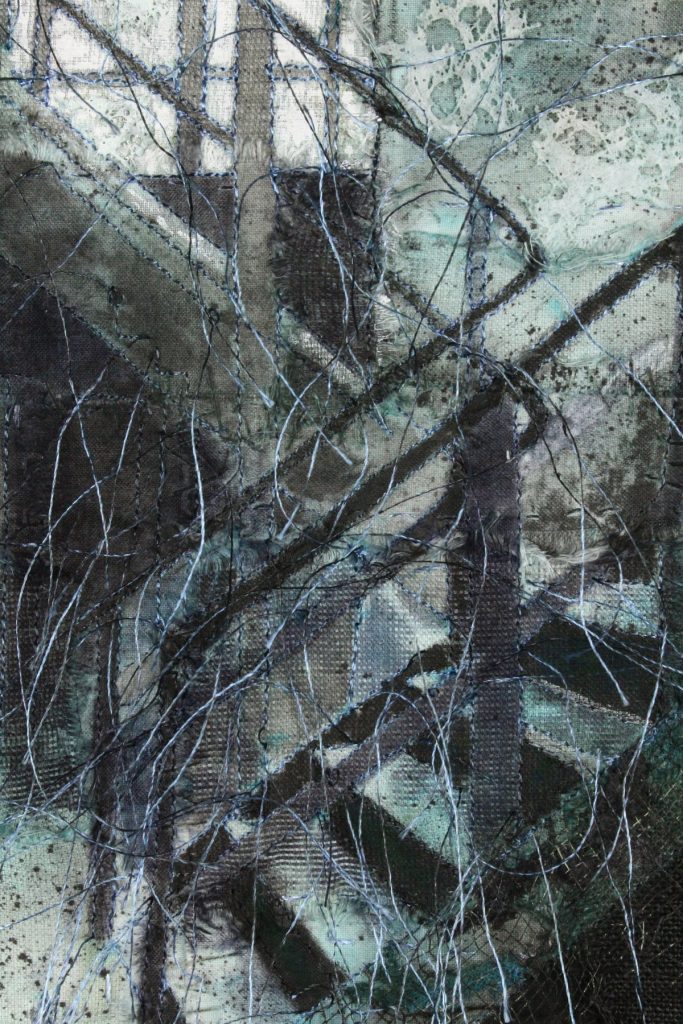
Working with recycled materials is obviously great for the planet, but you also seem to enjoy the past history of the materials themselves? How do you incorporate this into your designs?
I like the feeling of what these fabrics could tell you. I have used prayer flags from my narrowboat, antique lace, old tablecloths and place mats in the backgrounds. What have these things seen, what would their previous owner think of what I made with them? If there were difficult times, what could be made out of these items? They wouldn’t just be thrown away because we wanted a new colour of bedding for example. I suppose it can be summed up by the wartime make do and mend philosophy.

Can you tell us a little about how you go about designing and constructing your pieces? Do you have any advice for our students on the best way about translating their ideas into stitch?
I work from photographs that I manipulate in Photoshop. In Photoshop I add extra textures, colours and light sources so that the image portrays the feelings that I want to come across.
In terms of advice, it has taken me a long time to realise that just because I can’t draw very well, it doesn’t mean I can’t get my ideas across. I tried charcoal drawing for the first time recently and I liked the way I couldn’t be as accurate as with a pencil so I was allowed freedom to play.
So try lots of different types of art, collage, painting, inks, charcoal etc just to see how you get on with them. It’s not all about the pencil!
I enjoy the challenge of recreating in textiles, the images I have created using Photoshop.
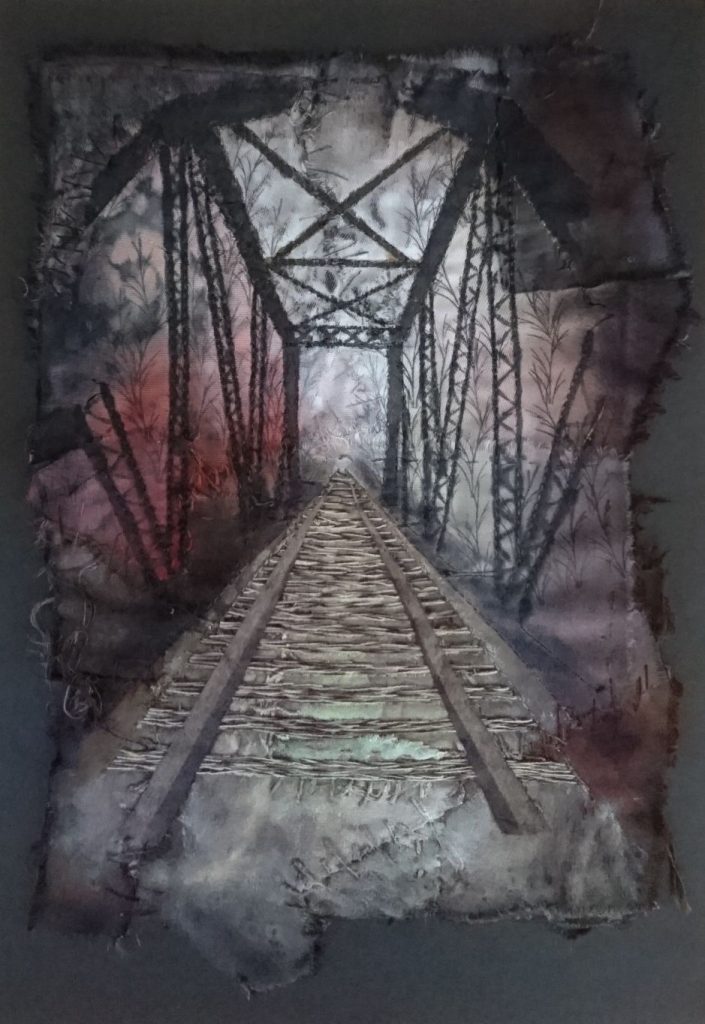
How have you experienced the pandemic – has it been helpful or challenging for you personally and for your business?
Well this is a tricky one for me to answer as people seem to want to hear how bad life is now. I was very lucky! I’m so used to being indoors to sew and I don’t go out that much, so not much changed! In my personal life however, my husband was fortunate enough to publish a book. It’s called Big Panda and Tiny Dragon which has become very successful. I guess life has taken a dramatic turn in that respect! For me there were cancelled workshops and exhibitions, but I have still been selling work and doing commissions so my business didn’t really change notably.
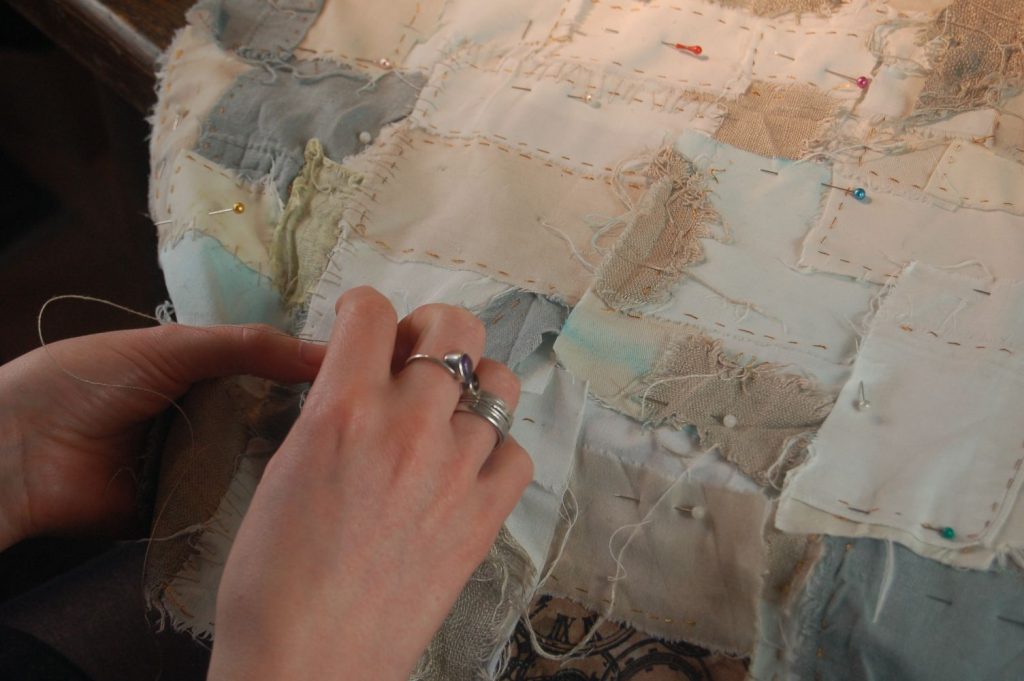
What is next? Do you have exhibitions or new books underway that you could tell us a little about?
I am looking to try some new techniques where I transfer ghostly images to my work. This has proved a challenge so far because the backgrounds I make are very textured. I would also like to use more hand embroidery in my work, as hand embroidery is my main love. However, I struggle to make it messy which I need to master to get my grungy textures to work. I used to specialise in hand embroidered British birds which were very carefully stitched. I’m trying to steer away from this style of smooth stitching and replace it with more chaos!
I am fortunate enough to have pieces of my work exhibited in a gallery in Mumbles, Swansea called Tides Fine Art. In the future I hope to have more.
I will continue to make technique videos for YouTube. I also create small booklets on how I make my work, which are available on my website. www.gothicdecay.com
But for now I hope to keep refining my techniques and developing my style. You can follow me on Facebook and Instagram.


